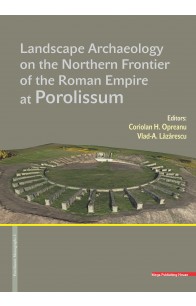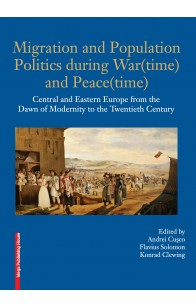Rezultate căutare pentru 'Vlad Andrei L��z��rescu'
„The frontiers of the Roman Empire, over 5000 km long, stretch from the Atlantic coast of Scotland, along the Rhine and the Danube, also enclose the Banat region and Transylvania, then going down along the Oriental Carpathians to the Black Sea; from the southern coast of the Black Sea they continue towards the Near East until the Red Sea; then, in North Africa, they line the edge of the Sahara desert until the Atlantic coast of Morocco. Over this entire area, visible traces of fortifications, roads and settlements are still preserved, but numerous monuments still lay hidden underneath the earth. Despite the fact that the Roman frontiers crossed regions with different relief and climate, they constitute a whole in that they were designed to protect Roman territories. The research of these monuments and the preservation policy regarding them was and is unequal in the various presentday states on whose territory traces of the Roman frontier are to be found. Consequently, in the ‘80s of the 20th century, the idea of globally protecting the Roman frontiers, viewed as a unitary monument, was met. In 1987, Hadrian’s Wall in United Kingdom was declared a UNESCO monument. It was followed in 2005 by the German-Raetian sector, on which occasion the UNESCO committee decided to set up the ‘Frontiers of the Roman Empire’ site. (...)
This project through its complexity generated an interdisciplinary approach of the proposed subject stimulating such future attempts in the archaeological research field. By using the latest technical methods of non-destructive investigation the project did not damage the stratigraphy of the archaeological site obtaining instead a high amount of data otherwise time consuming judging from the archaeological excavations perspective contributing also to the preservation of the cultural heritage.” - Introduction
SUMMARY
Carmen Borbély & Petronia Popa Petrar, Foreword
I. Configurations of Posthumanist Thought
Horea Poenar, (Another) Year Zero: The Commons in a Posthuman Age
Rareș Moldovan, Authentes: a Shadow-Play or A Series of Observations in “Post” about Authenticity
Călina Părău, Thinking and Constructing Moments of Split
Attila Kovács, Anonymity and Spectral Existence in Urban Space
Marius Conkan, Mapping Literature: Geocritical Thinking and Posthumanism
Marie-Agnès Cathiard, De l’« imaginaïf » en prosthétique
Cosmina Moroșan, Peace and Technology. Michel Serres
II. Figurations of Posthuman Becoming
Christian Moraru, Crossing the Kafka Network: Schulz, Blecher, Foer, and the Repositioning of the Human
Giovanni Rotiroti, Subjectivations et désubjectivations post-humaines. Corps de langage et flux inconscients dans le matérialisme enchanté d’Urmuz et Gherasim Luca à partir de la pensée de Gilles Deleuze et Félix Guattari
Doru Pop, Replicant Theologies of the Early Robocene or The Covenant of Procreating Replicants, Cybernetic Fertility and Divine Androids
Alina Preda, “New Planets for Old”: A Posthumanist Ecocritical Approach to Jeanette Winterson’s Ustopia
Ruxandra Cesereanu, Lanark and Unthank – Posthuman Elements in Alasdair Gray’s Novel
Diana Melnic, Vlad Melnic, Shortcut to Posthumanism: Decentring Elements of the Gaming Experience
Kwasu D. Tembo, Among Them but Not One of Them: A Xenological Exploration of the Otherness and Power of DC Comics’ Superman
Nóra Máthé, “Are You Thor, the God of Hammers?” – Mixing the Posthuman and Old Norse Mythology in Thor: Ragnarok
Nicolae Andrei Szilagyi, The Human in the Context of a Posthuman World
Cristina Diamant, Archiva(b)l(e) Bodies and Cyber Afterlife in David Mitchell’s Cloud Atlas
Marius Viorel Pușcaș, From Narrative Art to Discourse. A Posthuman Approach in Firmin: Adventures of a Metropolitan Lowlife
III. Refiguring Past Trauma, Prefiguring an Apocalyptic Future
Corin Braga, Antiutopies apocalyptiques et posthumaines
Andrada Danilescu, Beyond the Human: Transhumanist Negotiations and Posthuman Instantiations in Aldoux Huxley’s Brave New World and David Mitchell’s Cloud Atlas
Dana Bizuleanu, Svetlana Alexievich and Posthuman Narratives
Anamaria Lupan, Marguerite Yourcenar et le post-humanisme
Dana Percec, The Canadian Tempest. Margaret Atwood and Shakespeare Retold as Hag-Seed
Aura Poenar, Necessary Monsters. Monstrous Narratives. Haunted Images of Our Time
Book Reviews
"This volume with the somewhat ambitious title Migration and Population Politics during War(time) and Peace(time): Central and Eastern Europe from the Dawn of Modernity to the Twentieth Century reflects and builds upon the current debates in the thriving field of migration studies and migration history. It aims to provide an innovative perspective on the regional East European dimension of this phenomenon by discussing the specific migration processes in the area from early modern times to the present."(Excerpt from "Introduction")






